Super User
Industry urged to be COSHH compliant as inspection programme continues into 2022
Manufacturing and engineering companies are being urged to ensure they are COSHH (Control of Substances Hazardous to Health) compliant by one of the UK’s leading oil mist extraction experts.
Telford-based Filtermist Systems Limited is making its customers and the wider industry aware that The Health and Safety Executive (HSE) is continuing to run its Fabricated Metals inspection programme until at least March this year.
Inspectors are paying particular attention to exposure to metalworking fluids and welding fume - both of which can cause several occupational illnesses, including respiratory and skin conditions.
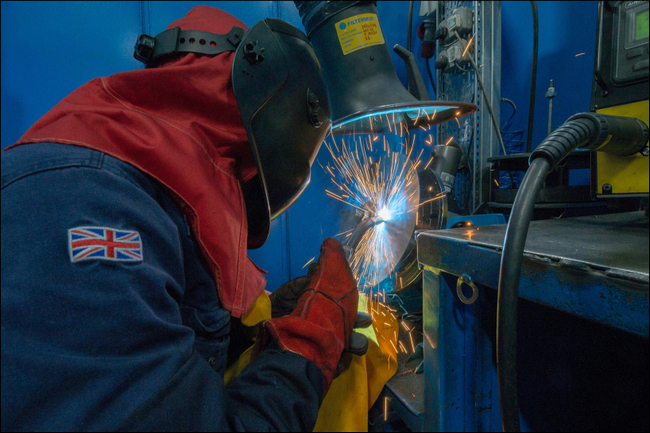
COSHH (Control of Substances Hazardous to Health) Regulations 2002 require all employers to implement effective control measures to minimise hazards posed by airborne particles, including oil mist, dust and fume.
Failure to adhere to these rules can result in improvement notices being served, which can lead to hefty fines if ignored.
“The HSE looks at a ‘hierarchy of controls’ when assessing if adequate measures are in place to protect workers from exposure to airborne oil mist and fume particles,” explained Craig Woodward, Divisional Sales Director for Filtermist Systems Limited.
“It is widely recognised that the most effective control is to use Local Exhaust Ventilation (LEV), which captures contaminated air at source - preventing it from escaping into the working environment.
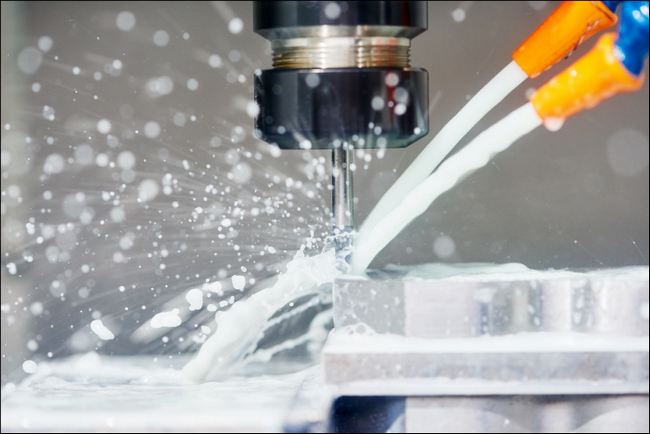
“Despite COSHH regulations being introduced in 1989, we are still seeing many companies who either don’t use LEV at all, or don’t think they need it on every machine tool. HSE’s inspections so far are in line with our experience, and therefore the current inspection programme has been extended into 2022.”
He went on to add: “We realise that effective mist extraction is not the most exciting investment when compared to purchasing new machine tools, but it can lead to many benefits, including increased productivity, lower cleaning bills, consistent component quality and support in the recruitment and retention of employees.
“All of this is on top of the main benefit, which is protecting the most valuable asset of all – your staff!”
Filtermist has manufactured its own range of compact, quiet and efficient LEV oil mist filters in the UK for over 50 years.
All units come with a free five-year warranty and end-users benefit from the first service being included as part of the sale, meaning customers can be confident their oil mist filter is performing as intended.
As well as its own brand of filters, the company also supplies premium oil mist, smoke and fume filters from sister company Absolent AB.
LEV systems can be standalone filter units or central systems designed to pick-up contaminated air from multiple extraction points for all types of airborne particulate.
Filtermist also offers a comprehensive aftermarket service that includes routine and reactive maintenance, spares and COSHH compliant LEV testing.
Find out more about the HSE's current campaign by following this link, or contact the Filtermist team on 01952 290500/by email This email address is being protected from spambots. You need JavaScript enabled to view it..
EnerMech starts 2022 with over £500 million of new awards
With more than a half-billion-pounds of new contracts secured in the last 12 months, EnerMech has kicked off 2022 by breaking into new geographies and business territories. It starts work in January on several significant campaigns, including numerous transformational mega-projects around the world.
During 2021, the leading integrated solutions specialist, which operates in 26 countries, was awarded over £500 million of business with new and existing clients across its target end markets, including the energy, renewables, infrastructure, nuclear and waste-to-energy sectors.
With some projects already underway, and new ones commencing imminently, the firm has increased its headcount by approximately 30% compared to 2020.
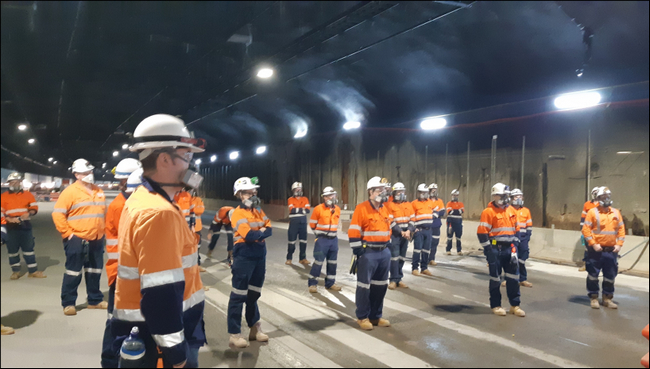 Suggested caption: EnerMech kick starts 2022 with global mega projects including transformational infrastructure campaigns
Suggested caption: EnerMech kick starts 2022 with global mega projects including transformational infrastructure campaigns
Last year, in response to the headwinds caused by low oil prices and the impact of coronavirus restrictions, EnerMech adopted a swift and proactive approach to the market that complemented its diversification strategy, with a priority focus on the health and wellbeing of its people while continuing to deliver consistent and safe service to its clients. The company also added innovative technologies and solutions to its portfolio, enhancing its capability offering to support its entry into new markets.
Sandeep Sharma, CFO of EnerMech said: “The diligent and responsive measures we adopted last year, as well as the investments we made, have had a truly positive impact on our people, our clients and our business. This success, combined with our ongoing resilience and determination, has set us on course for continued growth this year and beyond, growth that will safeguard jobs and create new ones.”
EnerMech CEO, Christian Brown, added: “After winning more than half a billion pounds of new business in the last 12 months, 2022 will be a very busy year for us. We are delivering several milestone campaigns for existing and new clients in the sectors we have traditionally supported, as well as new end markets and new regions, where clients value the reliability and safe delivery across all phases of the project lifecycle for which we are known.
“As well as having a healthy order book, we also have new opportunities on the near horizon. Our people are expert at listening to our clients’ needs and providing astute, tailor-made solutions, helping to grow our business and reputation for being a customer-focused, responsive partner.
“Our strengthened position is testament to the talent we have in-house and their hard work in these challenging times. We remain committed to the safety, development and well-being of our people, and I’m extremely proud of the excellent work they continue to deliver. I would like to thank all our teams for their continued dedication over the past 12 months.”
EnerMech:
Formed in April 2008, EnerMech provides specialist integrated mechanical, electrical, instrumentation and integrity services to the international energy and infrastructure sectors, from pre-commissioning through operations and maintenance and late-life support/decommissioning.
The business is focused on offering a safer, more customer-focused, responsive service at lower cost, while delivering a much greater level of engineering and technical support than competitors can offer. In December 2018, EnerMech was acquired by The Carlyle Group, the NASDAQ listed global asset manager.
EnerMech specialises in providing integrated supply, operations, maintenance and engineering solutions in its core services of Cranes and Lifting, Electrical and Instrumentation, Equipment Rental, Hydraulic products and services, Industrial Services, Process, Pipeline and Umbilicals (PPU), Maintenance and Integrity Services, Training and Valve supply and services.
The group is headquartered in Aberdeen with bases in Great Yarmouth, Bristol (UK); Stavanger, Houston, Pasadena, Sulphur, Casper, Williston (USA), Guyana, Trinidad, Mexico, Abu Dhabi, Iraq, Qatar, Saudi Arabia, Azerbaijan, Kazakhstan, Singapore; Perth, Melbourne, Sydney, Brisbane, Darwin, Gladstone, Chinchilla (Australia); Malaysia, China, South Korea, India, Ghana, Nigeria, Angola and South Africa. Website: www.enermech.com
Wood and FutureOn collaborate to provide an integrated technical and digital service to operators
FutureOn, the global software company specialising in the energy sector and creator of the award-winning, SaaS field design applications, FieldTwin Design and its API-centric collaboration platform, FieldTwin, has formed a strategic collaboration with global consulting and engineering leader Wood, to provide an enhanced service to its client base of global asset operators.
Wood’s expert technical services specialising in the early field development studies for subsea and ocean-based energy systems, will integrate with FutureOn’s unique field design applications, and proven API-centric collaboration platforms, resulting in significant efficiency gains across the design phase.
Having previously trialled FutureOn’s technology in 2019, the latest agreement will see Wood provide technical and integration services to operators using FutureOn’s software. In addition, the company will offer the software as part of its suite of technical services to new and existing customers across the world.
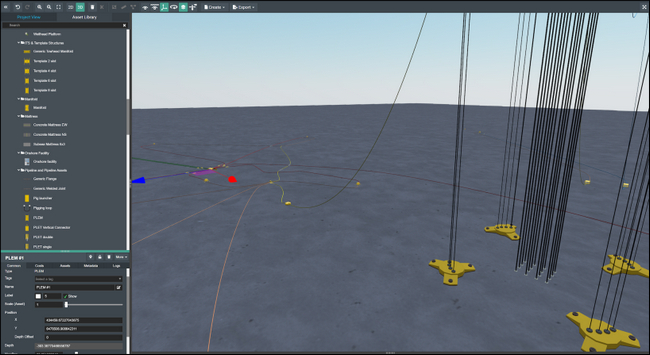
FutureOn’s open and collaborative approach to field design is based on data-rich 2D and 3D visualisations. The inclusion of metadata on assets and costs will enable reliable early-stage production and financial forecasts. It also provides a real-time visual blueprint of a field development allowing project teams and contractors to collaborate remotely, development of options at pace and a shared project workspace for timely delivery.
Looking to the future, Wood and FutureOn are committed to supporting the world’s major asset operators’ efforts to build a sustainable economic recovery from their existing infrastructure, optimising asset performance and extending productive field life whilst accelerating the move towards net-zero. The agreement will support these initiatives by combining the power of FutureOn’s FieldTwin technology for the streamlined design of renewable energy systems with Wood’s Automated Design product for pipeline systems that address key aspects of the global net-zero challenge.
Darrell Knight, Executive Vice President of Strategy and Partnerships, said:
“Wood has established excellent credentials having become the trusted consulting and engineering partner on the world’s largest and most complex energy projects. It is testament to the transformative impact of our collaborative web-based platform solutions that Wood has chosen to work with FutureOn.
“The collaboration is the perfect fit as we place the same importance on bringing innovation to the fore to solve the most critical challenges, including the improved communication and increased collaboration necessary to achieve the shortest possible path to energy generation, the best returns over the life of any asset, and minimising the impact on the environment. We’re looking forward to building on this collaboration, and bringing this new, integrated solution to our customers to support their goals.”
Matt Kirk, Senior Vice President, Specialist Engineering and Consulting at Wood, said:
“FutureOn is one of the best software solutions companies in the energy sector, and we are delighted to collaborate and serve the dynamic needs of our global client base. Asset operators everywhere are recognising the need to completely transform their existing infrastructure as part of the shift towards a net-zero future. Together, Wood and FutureOn will harness its collective expertise to help them make it happen.
“The opportunities to influence project economics and optimise the CAPEX on energy developments remains highest at the conceptual and early phases of a project. This collaboration brings together the smart and efficient field development visualisation delivered with FutureOn’s FieldTwin with the automated design and deep domain expertise from Wood. This powerful combination will provide faster and more predictable project outcomes for our clients.”
About FutureOn
Experts in data visualization, FutureOn emerged from Xvision in 2016 to become a standalone provider of state-of-the-art visual engineering for the global energy sector. The company transforms the performance of complex capital projects with our cutting-edge visualization technology.
FutureOn is proud to offer its global customer base industry-leading software solutions to create digital twins that deliver a complete asset visualization and integrated data model that unlocks value through increased efficiency, improved safety, reduced costs, risk mitigation, lower emissions and increased uptime.
FutureOn technology includes:
FieldTwin Design, a cloud-based digital platform that provides rapid visual workflows for early-stage subsea engineering work. Multiple data streams from geography to bathymetry, topography, existing infrastructure and other physical constraints can be combined with proprietary information such as reservoirs, wells and drilling to create an information-rich 3D visualization of any potential project location.
FieldTwin provides a visual representation of the entire life cycle of a field by creating and maintaining a digital twin — an exact digital copy of an oil and gas company’s physical asset — which enables producers to maximize asset performance and value.
AGAMEDE revolutionises biotechnology and fights COVID-19
Developed at the Institute of Bioorganic Chemistry of the Polish Academy of Sciences, alongside Mitsubishi Electric, Labomatica and Perlan Technologies, the AGAMEDE robotic system was designed to significantly speed up the diagnosis of SARS-CoV-2. Thanks to state-of-the-art automation technology combined with artificial intelligence, the system can test 15,000 individual samples per day. Other applications include researching new drugs, developing individualised cancer therapies or even creating cosmetic formulations.
![The AGAMEDE project is an interdisciplinary project that combines the worlds of robotics, computer science, industrial design, mathematics, biology and chemistry. [Source: Institute of Bioorganic Chemistry, Polish Academy of Sciences (IBCH PAS)]](/images/news/Technology/logos/2022-01-10_091822.jpg) The AGAMEDE project is an interdisciplinary project that combines the worlds of robotics, computer science, industrial design, mathematics, biology and chemistry. [Source: Institute of Bioorganic Chemistry, Polish Academy of Sciences (IBCH PAS)]
The AGAMEDE project is an interdisciplinary project that combines the worlds of robotics, computer science, industrial design, mathematics, biology and chemistry. [Source: Institute of Bioorganic Chemistry, Polish Academy of Sciences (IBCH PAS)]
Agamede is considered the first female scientist in history and therefore a fitting namesake for the laboratory automation system developed at the Institute of Bioorganic Chemistry of the Polish Academy of Sciences (IBCH PAS). While automating laboratory work is a common practice, the AGAMEDE robotic system combines automation and artificial intelligence (AI) to form a unique ‘closed loop’ setup. Here, the robots prepare experiments, read the results at a specified time and interpret the data using Labomatica’s Gene GameTM software to independently prepare the next experimental cycle. This means that operators simply need to define the question, design the experimental system and then monitor the correct sequence and operation of the system. AGAMEDE can then conduct experiments 24 hours a day and deliver results.
The combination of AI and automation in a high-throughput system is a breakthrough. Most automated high-throughput systems still require an operator to read the results and plan the next series of experiments after a cycle is completed. AGAMEDE can do this independently.
"Thanks to the AI module, AGAMEDE interprets the experiments without human involvement, based on mathematical models," explains Radosław Pilarski, PhD, the inventor and chief engineer of the system. "The system can be used by central diagnostic laboratories, pharmaceutical companies in drug development, oncology laboratories in search of personalised therapies for patients, but also in R&D departments of chemical and biotechnology companies to optimise bioprocesses."
![The robot from Mitsubishi Electric is the central component of the system. It continuously operates the analysers according to the specifications. [Source: Institute of Bioorganic Chemistry, Polish Academy of Sciences (IBCH PAS)]](/images/news/Technology/logos/2022-01-10_091851.jpg) The robot from Mitsubishi Electric is the central component of the system. It continuously operates the analysers according to the specifications. [Source: Institute of Bioorganic Chemistry, Polish Academy of Sciences (IBCH PAS)]
The robot from Mitsubishi Electric is the central component of the system. It continuously operates the analysers according to the specifications. [Source: Institute of Bioorganic Chemistry, Polish Academy of Sciences (IBCH PAS)]
EPICELL project
Work on AGAMEDE began at the IBCH PAS in 2015. The system was originally developed for the EPICELL project, which was funded by the National Centre for Research and Development (NCBiR) as part of the STRATEGMED programme ’Prevention and Treatment of Civilisation Diseases‘. The aim of the project was to develop optimised media for the culture of induced pluripotent stem cell-derived (iPSC) cardiomyocytes.
The EPICELL consortium consists of the IBCH PAS, the Institute of Human Genetics PAS as well as three hospitals from Poznañ. Combining expertise in small molecule epigenetic modulators and experience in cell reprogramming, it conducted studies leading to the future development of methods for transforming induced iPSCs for the purposes of regenerative medicine. In particular, they looked at targeted implantation in the hearts of patients after heart attacks. The idea was to restore cardiac output to its pre-infarction state. The challenge was the number of experiments required to design a suitable mix of small molecule epigenetic modulators. For example, a recipe with ten components and ten different concentrations requires 10,000,000 experiments. "AGAMEDE was used to search for the right combination of compounds in a multidimensional system of solutions. From this, the composition of the reprogramming medium ’EPICELL One‘ was developed," explains Prof. Wojciech T. Markiewicz, head of the EPICELL project.
![Thanks to Labomatica's Gene Game software, which interprets the data, the system is a ’closed loop‘. It prepares and reads the data, interprets it and then independently adjusts the test series. [Source: Institute of Bioorganic Chemistry, Polish Academy of Sciences (IBCH PAS)]](/images/news/Technology/logos/2022-01-10_091914.jpg) Thanks to Labomatica's Gene Game software, which interprets the data, the system is a ’closed loop‘. It prepares and reads the data, interprets it and then independently adjusts the test series. [Source: Institute of Bioorganic Chemistry, Polish Academy of Sciences (IBCH PAS)]
Thanks to Labomatica's Gene Game software, which interprets the data, the system is a ’closed loop‘. It prepares and reads the data, interprets it and then independently adjusts the test series. [Source: Institute of Bioorganic Chemistry, Polish Academy of Sciences (IBCH PAS)]
15,000 tests per day
At the end of March 2020, the situation changed. Since its foundation, the IBCH PAS has been dealing with RNA and DNA nucleic acids, so it had all the facilities to deal with SARS-CoV-2 diagnostics. "Our institute was the first in Poland to develop a test to detect SARS-CoV-2. We soon decided to combine AGAMEDE's automation capabilities with our tests and developed a high-throughput diagnostic protocol that allows us to test 15,000 samples in one day. At least this is the potential, because IBCH PAS as a scientific entity does not have an accredited diagnostic laboratory. This is an outstanding result, because when analysing samples manually, one person can at most process a few hundred samples a day," says IBCH PAS director Prof. Marek Figlerowicz.
![Mitsubishi Electric's industrial robot offers a long arm reach as well as an integrated set of robot-controlled tools for micro-scale test series on 96- and 384-well microassay plates. [Source: Institute of Bioorganic Chemistry, Polish Academy of Sciences (IBCH PAS)]](/images/news/Technology/logos/2022-01-10_091933.jpg) Mitsubishi Electric's industrial robot offers a long arm reach as well as an integrated set of robot-controlled tools for micro-scale test series on 96- and 384-well microassay plates. [Source: Institute of Bioorganic Chemistry, Polish Academy of Sciences (IBCH PAS)]
Mitsubishi Electric's industrial robot offers a long arm reach as well as an integrated set of robot-controlled tools for micro-scale test series on 96- and 384-well microassay plates. [Source: Institute of Bioorganic Chemistry, Polish Academy of Sciences (IBCH PAS)]
Robots, PLC and software from Mitsubishi Electric
The AGAMEDE project was created alongside technology partners Mitsubishi Electric, Labomatica and Perlan Technologies. Mitsubishi Electric provided a 6-axis robot, PLC controls and its MELFA Basic software. The industrial robot with its long arm reach is the central component of the system. Using an integrated set of robotic tools, it can perform microscale experiments on 96- and 384-well microassay plates, reproducing the work of a laboratory technician who continuously operates the analytical equipment. It does this according to the experimental protocols entered by the operator into the control software.
![New approaches to laboratory planning: a bright and light-flooded clean room for aseptic cell cultures, instead of a dark and windowless lab. [Source: Institute of Bioorganic Chemistry, Polish Academy of Sciences (IBCH PAS)]](/images/news/Technology/logos/2022-01-10_092005.jpg) New approaches to laboratory planning: a bright and light-flooded clean room for aseptic cell cultures, instead of a dark and windowless lab. [Source: Institute of Bioorganic Chemistry, Polish Academy of Sciences (IBCH PAS)]
New approaches to laboratory planning: a bright and light-flooded clean room for aseptic cell cultures, instead of a dark and windowless lab. [Source: Institute of Bioorganic Chemistry, Polish Academy of Sciences (IBCH PAS)]
The application further includes industrial cell culture incubators, plate and tip feeders, pipetting stations, labellers, barcode scanners, plate sealers, fluorescence readers and spectrophotometers. As a particular highlight, AGAMEDE is equipped with an automated confocal microscope HCA with four fluorescence channels. For the biotechnology community, this instrument is the equivalent of the Hubble telescope brought into the microcosm. Instead of astronomical objects, it photographs and analyses millions of cells and tissue structures with similar quality and efficiency. The device is complemented by an acoustic dispenser that releases quantities of liquid in the nanolitre range (millionths of a millilitre). Rapid dispensing of such small volumes of solution reduces research costs and increases throughput. It allows experiments to be conducted using a collection of over 115,000 chemical compounds available.
Working under high pressure
"In implementing the first such advanced system in Poland – combining robotics with laboratory equipment – we benefited from our international experience. The support of Mitsubishi Electric's global organisation dedicated to innovative projects was very helpful," says Roman Janik, coordinator of solutions for the life science industry in Poland. However, he also emphasises the tight deadline of the project. "We all worked under time pressure to develop a solution that would relieve the lab technicians as quickly as possible. We were able to deliver a weekly throughput of 100,000 samples, which is scalable. This is a phenomenal result!"
![Agamede, the world's first female scientist, is the namesake of this high-throughput system that combines artificial intelligence with automation. [Source: Institute of Bioorganic Chemistry, Polish Academy of Sciences (IBCH PAS)]](/images/news/Technology/logos/2022-01-10_092102.jpg) Agamede, the world's first female scientist, is the namesake of this high-throughput system that combines artificial intelligence with automation. [Source: Institute of Bioorganic Chemistry, Polish Academy of Sciences (IBCH PAS)]
Agamede, the world's first female scientist, is the namesake of this high-throughput system that combines artificial intelligence with automation. [Source: Institute of Bioorganic Chemistry, Polish Academy of Sciences (IBCH PAS)]
Bringing many worlds together
Tomasz Scholz, Robotics Engineer at Mitsubishi Electric further recalls: "The task would have been complicated even without the time pressure. The AGAMEDE project is an interdisciplinary project that combines the worlds of robotics, computer science, industrial design, mathematics, biology and chemistry. The solutions we used in it are innovative and unique. As with many projects, the biggest challenge was to define the goal and how we would achieve it. The key to this was to find a common ’technical language‘ so that people from different areas of expertise could communicate on the same level and make their expectations clear. It was often difficult to bridge the gap between the academic world, which thinks in abstract terms, and the industrial world, which typically follows a fixed pattern."
New approaches for laboratory planning
The result is a system that not only works well, but also looks interesting. “Its design refers to ancient Greece and is a tribute to the beginnings of scientific thinking in our civilisation, especially to women in science,” explains Radosław Pilarski, PhD.
He further emphasises that the planning also paid attention to the laboratory space in which the installation was placed. A clean room for aseptic cell culture, windowless in most labs, was given a completely new look, breaking with previous standards. It is well lit thanks to large, carefully sealed windows. Glass panes were added to allow constant observation and control of the system without having to wear cleanroom suits. The work is facilitated by high-resolution 4K monitors and cameras that allow remote monitoring of AGAMEDE and experiments from anywhere in the world.
About Mitsubishi Electric
With 100 years of experience in providing reliable, high-quality products, Mitsubishi Electric Corporation (TOKYO: 6503) is a recognized world leader in the manufacture, marketing and sales of electrical and electronic equipment used in information processing and communications, space development and satellite communications, consumer electronics, industrial technology, energy, transportation and building equipment. Embracing the spirit of its corporate statement, Changes for the Better, and its environmental statement, Eco Changes, Mitsubishi Electric endeavors to be a global, leading green company, enriching society with technology. The company recorded consolidated group sales of 37.8 billion dollars* in the fiscal year that ended on March 31, 2021.
Mitsubishi Electric Europe, Industrial Automation – UK Branch is located in Hatfield, United Kingdom. It is a part of the European Factory Automation Business Group based in Ratingen, Germany which in turn is part of Mitsubishi Electric Europe B.V., a wholly owned subsidiary of Mitsubishi Electric Corporation, Japan.
The role of Industrial Automation – UK Branch is to manage sales, service and support across its network of local branches and distributors throughout the United Kingdom.
*U.S. dollar amounts are translated from yen at the rate of ¥111=U.S.$1, the approximate rate on the Tokyo Foreign Exchange Market on March 31, 2021.
KROHNE announces that Branom Instrument Company is their new Sales Representative for Northern California
KROHNE’s established partner in Washington and Oregon is expanding their reach
KROHNE, a world-leading manufacturer and supplier of solutions in industrial process instrumentation, announces that Branom Instrument Company, with its headquarters in Seattle, WA, is the manufacturer’s representative for all served industries throughout the Northern California region as of January 1st, 2022.
 Branom is replacing ACS Instrumentation & Valves, Inc, KROHNE’s long-time representative in the area. ACS has opted to end their operations and KROHNE appreciates their support and efforts while serving our mutual customers in the region.
Branom is replacing ACS Instrumentation & Valves, Inc, KROHNE’s long-time representative in the area. ACS has opted to end their operations and KROHNE appreciates their support and efforts while serving our mutual customers in the region.
About Branom:
Since 1947, Branom Instrument Co. has been providing customers with best-in-class process instrumentation for control and monitoring of flow, gas and liquid analytics, level, pressure, temperature, and automation. Learn more about Branom at www.branom.com
About KROHNE
KROHNE is a worldwide technological leader in the development, manufacture and distribution of accurate, reliable and cost-effective measuring instruments for the process industries. KROHNE focuses on forming partnerships with its customers to provide them with the most reliable and innovative solutions available in the marketplace. For more information about KROHNE’s complete line of measuring instrumentation for the process industries, contact KROHNE at 1-800-FLOWING (978-535-6060 in MA); fax: (978) 535-1720, email: This email address is being protected from spambots. You need JavaScript enabled to view it. or visit www.us.krohne.com
Food waste pump proves itself at largest University Biogas Plant
At the largest University campus AD/Biogas plant in the United States, a chopper pump made by Landia has now completed eight years of continuous robust service, despite the very tough environment of being in a food waste and FOG (fats, oils and greases) reception pit.
The facility at Michigan State University (MSU), which converts over 22,000 tons of food waste annually (from campus dining halls and local food processors, plus manure from MSU’s dairy farm) into renewable energy, opened in 2013, complete with the same Landia Chopper Pump (model DG-I 105).
Contributing towards the process of generating 2.8 million kilowatt-hours of electricity per year from the organic waste, the Chopper Pump (which was invented by Landia in 1950), reduces particle sizes as it transfers approximately 5,000 to 10,000 gallons per day into the digester mix tank.
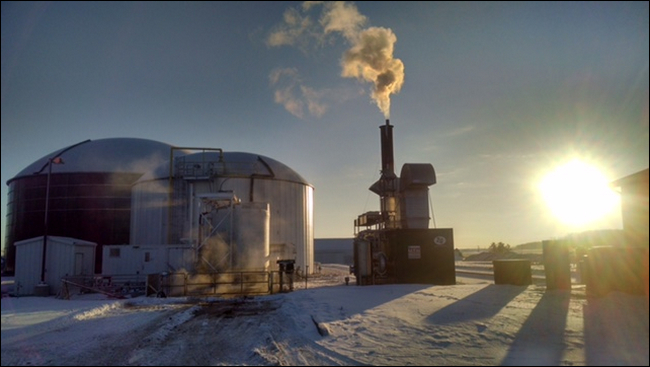 The digester at Michigan State University's biogas plant
The digester at Michigan State University's biogas plant
‘Durable and low on maintenance’
Louis Faivor, Farm Assistant Manager at MSU (South Campus Anaerobic Digester Operator), said:
“Considering the amount of delivered food waste we receive that is contaminated with gloves, bags, dishes and various other debris, the Landia Chopper Pump continues to prove reliable. In fact, it has only received its second rebuild just recently in the whole of the eight years since it was installed when the AD plant first opened back in 2013, which proves just how durable and low on maintenance it is”.
Designed with a unique knife system at its inlet that continually reduces solids in size and ensures no clogging or blockages, the Landia Chopper Pump is easy to service and also low on energy consumption.
‘Very tough indeed’
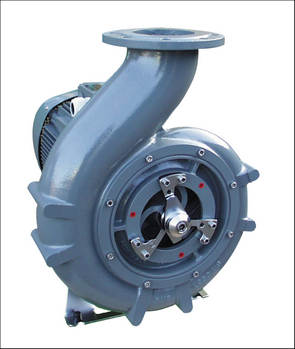 The Chopper Pump. Invented by Landia in 1950Dana Kirk, an Associate Professor from MSU’s Department of Biosystems and Agricultural Engineering, who oversees the AD operation, added: “Since the plant opened eight years ago, we have managed to reduce contamination levels, but food waste is always susceptible to debris that can damage equipment. The more we can keep the trash out, the longer time period we can go without replacing wear parts. The second rebuild was common wear parts, including the impeller and seals. It is very tough indeed”.
The Chopper Pump. Invented by Landia in 1950Dana Kirk, an Associate Professor from MSU’s Department of Biosystems and Agricultural Engineering, who oversees the AD operation, added: “Since the plant opened eight years ago, we have managed to reduce contamination levels, but food waste is always susceptible to debris that can damage equipment. The more we can keep the trash out, the longer time period we can go without replacing wear parts. The second rebuild was common wear parts, including the impeller and seals. It is very tough indeed”.
A separate reception pit contains cow manure from the MSU Dairy Teaching and Research Center, while the food waste transferred by the Landia Chopper Pump is sourced from several campus dining halls, food processing and manufacturing facilities in southern Michigan - plus fat, oils and grease from local restaurants. The feedstocks from both the manure and food waste reception pits are pumped into the 10,000-gallon mix tank, where they are blended.
From the power created, only about 20 percent is needed to sustain the AD process; the rest offsets energy consumption in 10 MSU south campus buildings; equivalent to generating enough energy to power about 250-300 homes. The nutrient-rich fertilizer created through the biogas operation is used on agricultural land.
www.landiaworld.com
Russelectric, A Siemens Business, Offers Customized SCADA Systems
Enables remote monitoring of all power system functions
Russelectric, A Siemens Business, a leading manufacturer of power control systems and automatic transfer switches, announces the availability of customized Russelectric® supervisory control and data acquisition (SCADA) systems, enabling users to monitor system operation, acknowledge alarms, and review PLC setpoints and alarm history. All screens are custom-designed for each power control system, providing the most realistic, accurate display possible.
The basic SCADA system includes a dynamic one-line display with changing color codes to indicate real-time power switching device status and power source connection to the loads. Event logging, alarm logging, and help screens are also included.
Optional enhancements are available to provide added functionality. Included are highly detailed graphic displays of the physical arrangement of equipment, control panel close-ups, instrument displays indicating actual values, and the ability to initiate control functions.

Also available is an optional simulation system. Based on SCADA system graphics, the simulation system enables off-line operator training without affecting any operating system parameters.
For more information, including graphic images of basic screens and optional simulator screens, visit http://www.russelectric.com/products/custom-scada/.
About Russelectric
Founded in 1955, Russelectric®, A Siemens Business, provides high-integrity power control solutions for mission critical applications in the healthcare, information technology, telecommunication, water treatment, and renewable energy markets. The company maintains vertically-integrated manufacturing facilities in Massachusetts and Oklahoma, where it designs and builds a full line of automatic transfer switches, switchgear, and controls. Russelectric products carry the longest and most comprehensive warranty in the industry, and are backed by a team of expert factory-direct field service engineers. To learn more about Russelectric products and the company’s commitment to customer satisfaction, visit www.russelectric.com, call (781) 749-6000, or email This email address is being protected from spambots. You need JavaScript enabled to view it..
Choosing Cooling Tower Replacement Fill
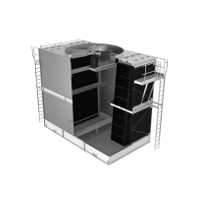 Cooling towers offer a proven and cost-effective solution for rejecting heat from condenser water and industrial processes. To maximize the operating cost savings, the fill media — the heat transfer surface that the water flows over — must be properly designed and in good condition.
Cooling towers offer a proven and cost-effective solution for rejecting heat from condenser water and industrial processes. To maximize the operating cost savings, the fill media — the heat transfer surface that the water flows over — must be properly designed and in good condition.
The fill is the heart of the system, and the performance of the entire system depends on maximizing the surface area of fill, evenly distributing the water across the surfaces, and optimizing the thickness of the water film to perform efficiently.
After years of operation, the fill media can eventually degrade to the point where it must be replaced. Building owners and operators can find it difficult to evaluate the claims by various manufacturers about which type of replacement fill is the best choice
WHICH FILL IS BETTER?
The ideal way to understand what fill is optimal is through independent research rather than relying on manufacturers promoting their own product. The most objective evaluation would come from an unbiased side-by-side comparison, in a real life operational situation. The competing products would be observed for years to determine not only how well they perform at the time of installation, but how they stand up over time.
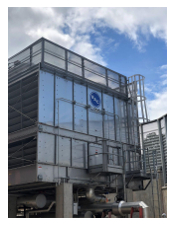 BACKGROUND
BACKGROUND
This is exactly what happened when a large professional sports arena in Southern California replaced the fill in its cooling towers. Three Baltimore Aircoil Company (BAC) Series 3000 Cooling Towers with a crossflow design had been contributing to the comfort and safety of the patrons of the 20,000-seat arena for 18 years. The cooling towers were performing adequately, but due to their age, it was decided that the fill should be replaced as part of a long-term maintenance plan.
HANGING FILL VS. BLOCK FILL
The plan was to replace the fill pack in one cooling tower per year, rather than taking all three towers off-line at once. In the first tower, and then in the second tower a year later, the fill was replaced with BAC’s VersaCross® Replacement Fill, a “hanging” style fill that matched the fill originally installed. When it came time to replace the fill in the third tower, the building owner decided to use a competitive product, a “block” style fill.
The BAC Series 3000 Cooling Tower has a crossflow design, meaning that the water flows vertically down the fill as air flows horizontally across it. Hot water from the system enters the cooling tower and is distributed over the fill (heat transfer surface). Air is drawn through the fill, causing a small portion of the water to evaporate. This evaporation removes heat from the remaining water, which is collected in the cold water basin and returned to the system to absorb more heat. The BAC Series 3000 Cooling Tower was designed to use hanging sheet fill, and BAC VersaCross® Replacement Fill is the replacement OEM hanging fill on the market. Long continuous sheets, with patterns embossed to increase surface area, are hung to allow smooth water flow from top to bottom.
The block-style replacement fill is a fundamentally different design. Blocks are comprised of corrugated layers of PVC sheets, with wavy sheets sandwiched between layers of flat sheets. The 12” by 12” by 42” blocks are stacked vertically.
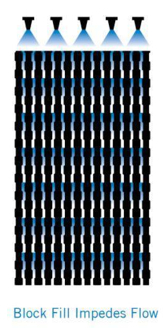 INITIAL HESITATIONS ABOUT BLOCK FILL
INITIAL HESITATIONS ABOUT BLOCK FILL
BAC raised concerns about whether the block style fill would perform adequately and whether it was compatible with the Series 3000 Cooling Tower design. The vertical spacing of block fill is wider than BAC hanging fill, providing less physical surface area than hanging fill. Reduced surface area results in less evaporative cooling.
Another concern was that water would not flow smoothly and evenly through the block fill. Within each block, where the corrugated layers are connected to each other, water flow can be impinged. Moreover, the transition between blocks significantly interrupts flow.
These connections between the flat pieces and the corrugated layers and the transitions between blocks also tend to trap solids. This can lead to scale buildup and fouling, resulting in unacceptable degradation in performance in just a few years.
TESTING PLAN TO COMPARE PERFORMANCE
After discussion among the building ownership and the installation contractor, the parties agreed that the block fill would be installed and an independent testing company, American Air Balance Co., would be retained by the arena owner to conduct tests comparing the performance of the cell with the block fill to the performance of one of the cells with the VersaCross® Fill.
The thermal testing was performed shortly after the block fill was installed. The chosen time was during a Saturday night NHL game because the arena was packed and the spectators were generating a lot of heat. All three cooling towers were running at full speed.
TEST RESULTS SHOWED CLEAR DIFFERENCE IN PERFORMANCE
When the two cooling towers were tested, Cooling Tower 1 (CT-1) with block fill performed at 72% of the original fill’s thermal capacity, and Cooling Tower 2 (CT-2) with the VersaCross® Fill performed at 96% of the original fill’s thermal capacity.
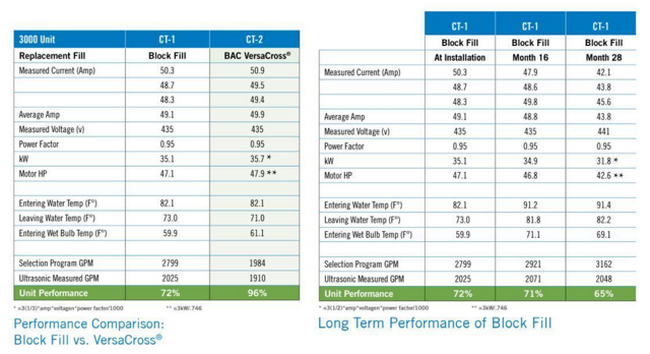
1
SIGNIFICANT DIFFERENCE IN LONG-TERM PERFORMANCE
The cell with block fill was tested again by the independent lab 16 months after installation and again at 28 months. The results showed an additional performance drop-off during that 28-month period.
CONCLUSION: FIRST COST VERSUS TOTAL COST OF OWNERSHIP
The arena’s real life experiment with side-by-side testing showed that the type of fill can make a big difference. The cooling towers in this case were designed to use hanging fill. Replacement with a third-party block fill significantly reduced evaporative cooling performance.
[1] Note: “Selection Program GPM” is a calculated prediction of how many gpm of water a Series 3000 unit with the original fill could cool with a given air inlet temperature, water inlet and outlet temperatures, and power consumption. The “Selection Program GPM” in this table above states that each of CT-1 and CT-2 with the original fill has the thermal capacity to cool 2799 gallons of water per minute from Entering Water Temp (F°) 82.1 91.2 91.4 82°F to 73°F at 60°F wet bulb while consuming 35 kW of power. Each of these same towers with the original fill can also cool 1984 gallons of water per minute from 82° to 71°F at 61°F wet bulb while consuming 36 kW of power.
After the testing showed clear performance deficiencies of the block fill, the arena replaced the block fill with BAC VersaCross® Fill.
The block fill may have had a lower initial purchase price, but it ended up costing more in energy consumption, maintenance costs, and short useful life than if the OEM replacement fill had been selected. The arena learned the hard way that the design and the quality of the fill is critically important to cost-effective, efficient, and reliable performance of the evaporative cooling tower.
ANDRITZ to supply complete electro- and hydro-mechanical equipment for the Nenggiri hydropower station, Malaysia
International technology group ANDRITZ – as part of a consortium – has signed a contract with TNBPG Hydro Nenggiri Sdn. Bhd. (a wholly owned subsidiary of TNB Power Generation Sdn Bhd.) to supply the complete electro- and hydro-mechanical equipment for the new Nenggiri Hydroelectric Project in Kelantan, the northeastern state of the Malay Peninsula.
Commissioning is scheduled for the middle of 2026. The contract value for ANDRITZ is more than 100 million euros.
The scope of supply of the consortium includes two Francis turbine generating units including complete mechanical and electrical balance of plant and hydro-mechanical equipment as well as the high voltage switchyard.

Once completed, the Nenggiri Hydroelectric Project will provide 300 MW of peak load coverage to significantly stabilize the national power grid. Flood mitigation benefits for the downstream areas are another important target of the hydropower station.
The Nenggiri Hydroelectric Project is one of several government-approved projects to meet the growing energy demand of Malaysia and to increase the share of renewable energy in its energy mix to 40 percent by 2035.
ANDRITZ GROUP
International technology group ANDRITZ offers a broad portfolio of innovative plants, equipment, systems and services for the pulp and paper industry, the hydropower sector, the metals processing and forming industry, pumps, solid/liquid separation in the municipal and industrial sectors, as well as animal feed and biomass pelleting. Plants for power generation, flue gas cleaning, recycling, and the production of nonwovens and panelboard complete the global product and service offering. Innovative products and services in the industrial digitalization sector are offered under the brand name Metris and help customers to make their plants more user-friendly, efficient and profitable. The publicly listed group has around 26,800 employees and more than 280 locations in over 40 countries.
ANDRITZ HYDRO
ANDRITZ Hydro is one of the globally leading suppliers of electromechanical equipment and services for hydropower plants. With over 180 years of experience and an installed fleet of more than 470 GW output, the business area provides complete solutions for hydropower plants of all sizes as well as services for plant diagnosis, refurbishment, modernization, and upgrade of existing hydropower assets. Pumps for irrigation, water supply and flood control as well as turbo generators are also part of this business area’s portfolio.
60 Million Euro for the industrialization of Sunfire's Hydrogen Technologies from the German government
Electrolysis companies need to rapidly expand their manufacturing capacities to meet the fast-growing demand for green hydrogen production. To prepare the serial, automated production of Sunfire’s alkaline and SOEC electrolyzers, the company and its affiliated partners from industry and research are receiving grant funding from the Federal Government.
Due to its enormous potential for decarbonizing energy intensive industries, green hydrogen has evolved from a contentious “new hope” to a fixed building block of the energy transition. It is no surprise that demand is rocketing for electrolyzers, which split water into hydrogen using renewable electricity. According to the plans, installed capacity in the EU alone is set to rise from the current 0.2 GW to 40 GW by 2030.
 Sunfire – one of the world’s leading developers and producers of electrolyzers – is therefore rapidly expanding its manufacturing capacities. Together with partners from research and industry, the German-based company is preparing its technologies for industrial production at gigawatt scale. To this end, the Federal Ministry of Education and Research (BMBF) is providing a grant of EUR 60 million for the lead project H2Giga.
Sunfire – one of the world’s leading developers and producers of electrolyzers – is therefore rapidly expanding its manufacturing capacities. Together with partners from research and industry, the German-based company is preparing its technologies for industrial production at gigawatt scale. To this end, the Federal Ministry of Education and Research (BMBF) is providing a grant of EUR 60 million for the lead project H2Giga.
The funding commitment will accelerate time-to-market of innovative high temperature electrolyzers (SOEC). Under the leadership of Sunfire, 15 associated partners will be receiving EUR 33 million to establish manufacturing processes and optimize systems. By using off-heat from industrial processes, Sunfire’s SOEC electrolyzers require up to 30 % less electricity from renewable energy sources than other technologies to produce a kilogram of hydrogen. “The new generation of our SOEC technology will be even more powerful and durable than today,” says Christian von Olshausen, CTO of Sunfire.
“We will redesign individual components to last longer and we will simplify the design of the systems,” added the Sunfire CTO. “With our optimized hightemperature electrolyzers, our industrial customers will be able to produce green hydrogen more efficiently – and therefore more cost-effectively. To further reduce the price of our product, we will be developing process chains for industrial series production.”
Sunfire is embarking on the challenging path to gigawatt-scale production together with several partners the company has already been working with on various projects in the past. For example, the company will be drawing on the expertise of XENON Automatisierungstechnik GmbH to help set up a pilot line for automated production. Both companies are already collaborating in making SOEC electrolyzers for the refinery of fuel producer Neste in Rotterdam. “We are really happy to cooperate with partners like XENON. They offer invaluable experience in the field of industrial manufacturing and are open to contributing this expertise to help drive
the development of new technologies,” explained Christian von Olshausen.
But the development of SOEC technology is not the sole target of support: BMBF is also providing funding for the industrialization of pressurized alkaline electrolyzers. Although these robust systems have already proved themselves for decades in industrial hydrogen projects, they have not yet been manufactured in series production. Sunfire and its eight associated partners have been granted total funding of EUR 27 million to transform the production of this technology to gigawatt scale.
“We will be establishing manufacturing processes and finalizing the new design of our pressurized alkaline electrolyzers,” explained Christian von Olshausen. “In comparison to the predecessor models, these will be yet another step forward in terms of energy consumption and longevity.” This will give a further boost to the process of alkaline electrolysis – which is already well established as the most costeffective electrolysis technology currently available.
The commitment from the German Government under the program “Wasserstoffrepublik Deutschland” (The Hydrogen Republic of Germany) is designed to accelerate the development and expansion of technologies to enable energyintensive industries to produce and use green hydrogen fast and at scale. In the lead project H2Giga, around 30 independent alliances are now working on transforming electrolysis technologies to the gigawatt scale. In addition to the public funding, Sunfire will also be investing significant amounts of its own funds in the
industrialization process.
Partners SOEC
• ConverterTec Deutschland GmbH
• DBI Gas -und Umwelttechnik GmbH
• DECHEMA-Forschungsinstitut
• Deutsches Zentrum für Luft und Raumfahrt e.V. (Institut für Technische
Thermodynamik)
• Europäisches Institut für Energieforschung EIfER
• Fraunhofer-Institut für Keramische Technologien und Systeme IKTS
• HORIBA FuelCon GmbH
• imk automotive GmbH
• Karlsruher Institut für Technologie (Institut für Angewandte Materialien;
Laboratorium für Elektronenmikroskopie)
• KERAFOL Keramische Folien GmbH & Co. KG
• Kontron AIS GmbH
• Sunfire (Coordinator)
• TU Bergakademie Freiberg (Technische Mechanik – Festkörpermechanik)
• Universität Bayreuth (Lehrstuhl Keramische Werkstoffe)
• XENON Automatisierungstechnik GmbH
Partners Alkaline Electrolysis
• Alantum Europe GmbH
• Deutsches Zentrum für Luft und Raumfahrt e.V. (Institut für technische
Thermodynamik)
• HAFF-Dichtungen GmbH
• imk automotive GmbH
• Fraunhofer-Institut für Fertigungstechnik und Angewandte
Materialforschung IFAM
• Fraunhofer-Institut für Fabrikbetrieb und -automatisierung IFF
• Frenzelit GmbH
• MTV NT GmbH
• Sunfire (Coordinator)
About Sunfire
Founded in 2010, Sunfire GmbH is a global leader in the production of industrial electrolyzers based on alkaline and solid oxide (SOEC) technologies. With its electrolysis solutions, Sunfire is addressing a key challenge of today’s energy system: Providing renewable hydrogen and syngas as climate-neutral substitutes for fossil energy. Sunfire’s innovative and proven electrolysis technology enables the transformation of carbon-intensive industries that are currently dependent on fossilbased oil, gas, or coal. The company employs more than 300 people located in Germany, Norway, and Switzerland. For further information please visit www.sunfire.de
